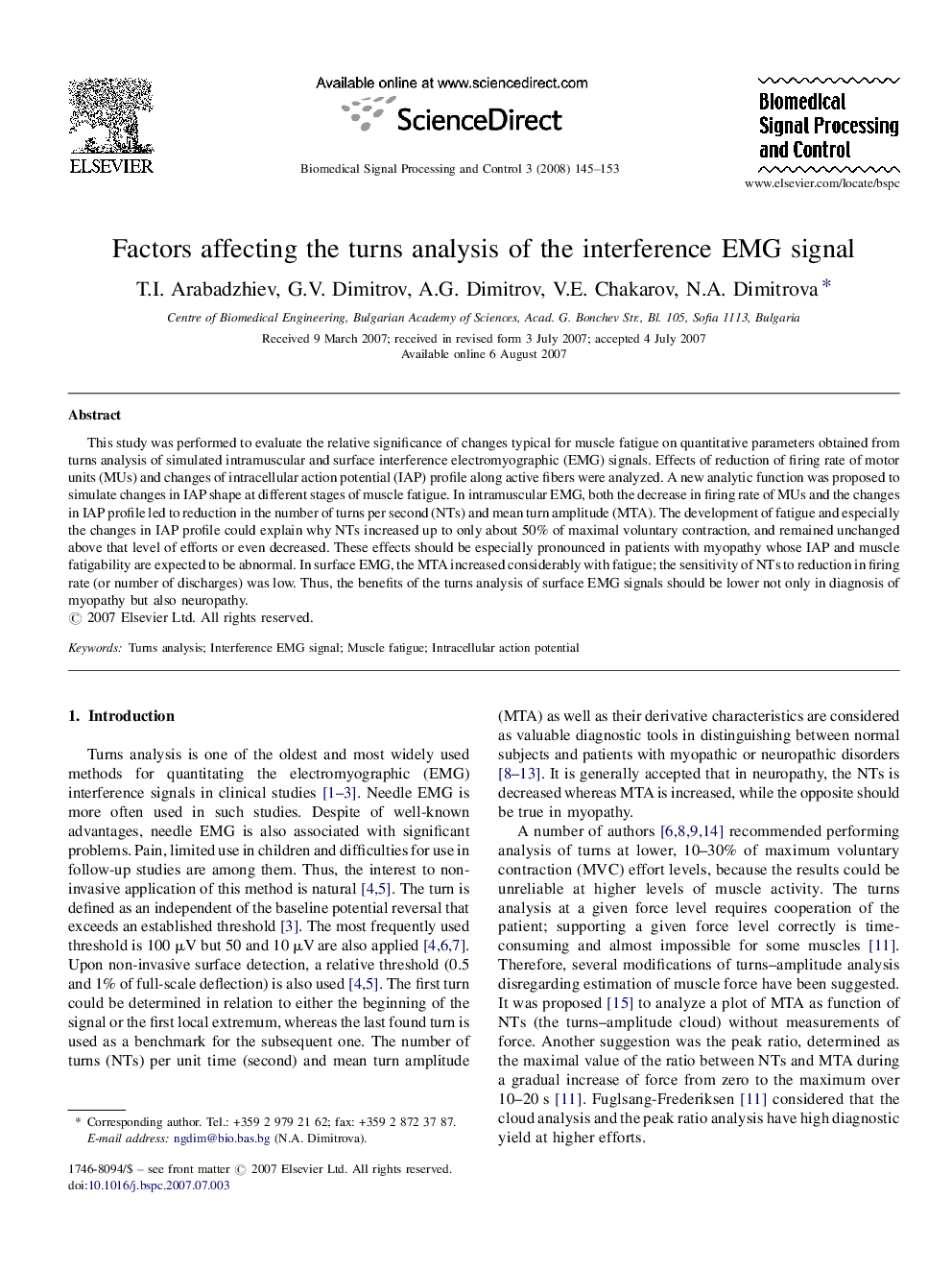| Article ID | Journal | Published Year | Pages | File Type |
|---|---|---|---|---|
| 557693 | Biomedical Signal Processing and Control | 2008 | 9 Pages |
This study was performed to evaluate the relative significance of changes typical for muscle fatigue on quantitative parameters obtained from turns analysis of simulated intramuscular and surface interference electromyographic (EMG) signals. Effects of reduction of firing rate of motor units (MUs) and changes of intracellular action potential (IAP) profile along active fibers were analyzed. A new analytic function was proposed to simulate changes in IAP shape at different stages of muscle fatigue. In intramuscular EMG, both the decrease in firing rate of MUs and the changes in IAP profile led to reduction in the number of turns per second (NTs) and mean turn amplitude (MTA). The development of fatigue and especially the changes in IAP profile could explain why NTs increased up to only about 50% of maximal voluntary contraction, and remained unchanged above that level of efforts or even decreased. These effects should be especially pronounced in patients with myopathy whose IAP and muscle fatigability are expected to be abnormal. In surface EMG, the MTA increased considerably with fatigue; the sensitivity of NTs to reduction in firing rate (or number of discharges) was low. Thus, the benefits of the turns analysis of surface EMG signals should be lower not only in diagnosis of myopathy but also neuropathy.
